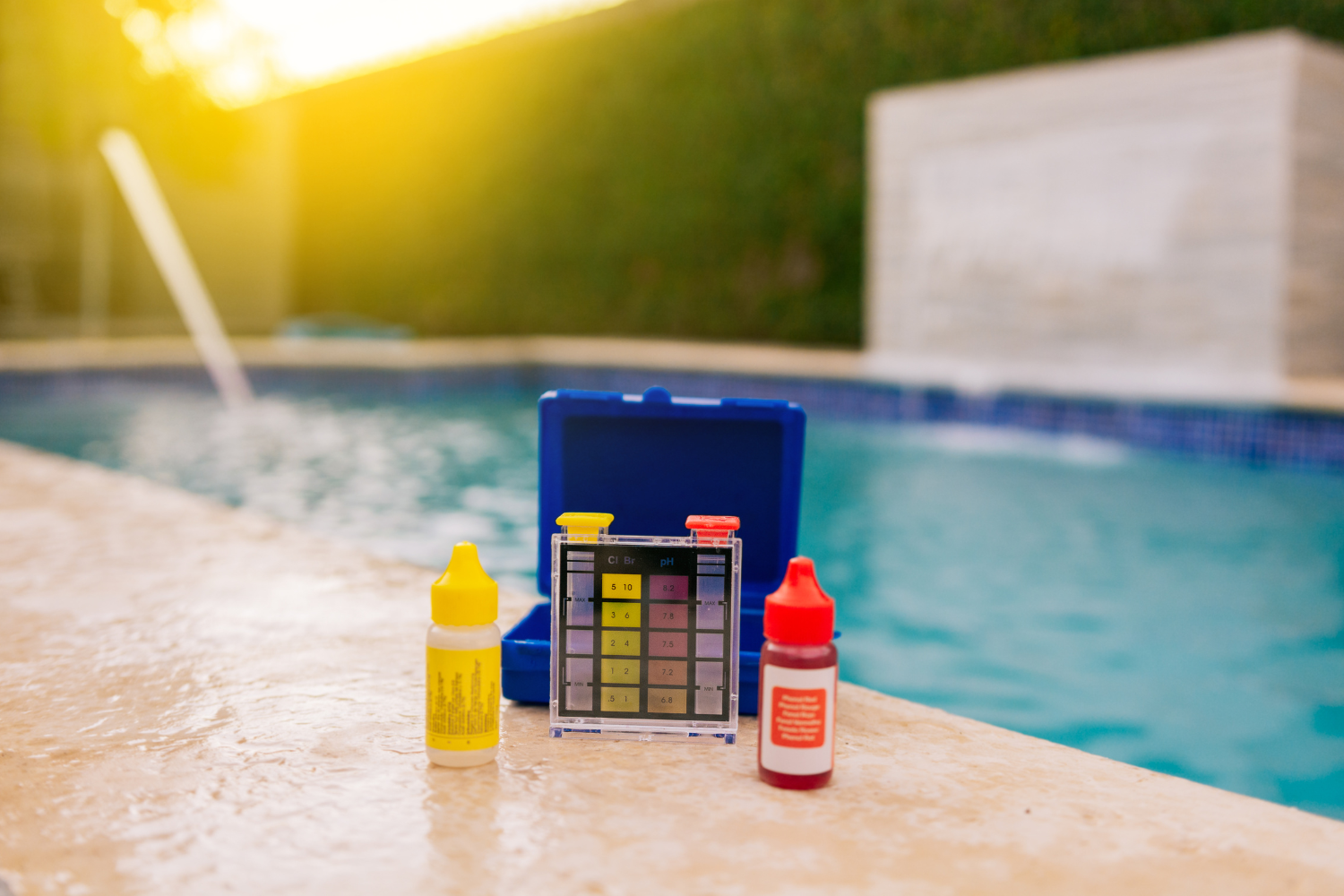Decoding Pool Water Tests
Understanding Your Results

Regular testing of your pool water is a fundamental aspect of pool maintenance. It ensures that the water is safe, clear, and inviting for swimmers. In this guide, we'll break down the essential elements of pool water tests and help you decipher the results.
Understanding Pool Water Tests: Pool water tests typically measure various parameters, including pH levels, total alkalinity, calcium hardness, chlorine levels, and cyanuric acid. Let's explore what each of these elements means for your pool water.
pH Levels: The pH level indicates how acidic or basic your pool water is. A balanced pH level is crucial for swimmer comfort and the effectiveness of chlorine. pH should ideally be maintained between 7.4 and 7.6.
Total Alkalinity: Total alkalinity acts as a buffer for pH levels. It helps prevent rapid fluctuations in pH, ensuring a stable environment for swimmers. The recommended total alkalinity range is 80 to 120 parts per million (ppm).
Calcium Hardness: Calcium hardness measures the amount of dissolved calcium in the water. Proper calcium hardness prevents issues like corrosion or scale formation. The ideal range for calcium hardness is between 200 and 400 ppm.
Chlorine Levels: Chlorine is a primary disinfectant that keeps the pool water safe for swimmers by eliminating bacteria and other contaminants. The recommended chlorine level is between 1 and 3 ppm.
Cyanuric Acid (CYA): Cyanuric acid stabilizes chlorine, protecting it from degradation due to sunlight. However, excessive CYA levels can reduce chlorine's effectiveness. Aim for a CYA level between 30 and 50 ppm.
Interpreting Test Results: Understanding the numerical values from your water test is essential. If any parameter falls outside the recommended range, corrective actions may be needed. For example:
- Low pH: Add soda ash to raise pH.
- High pH: Add muriatic acid or sodium bisulfate to lower pH.
Regular Testing Schedule: Consistent testing, ideally weekly, helps you catch and address imbalances before they become major issues. Keep a log of your test results to track changes over time.
By regularly testing and understanding your pool water, you empower yourself to maintain a safe and enjoyable swimming environment. Testing kits are readily available, and many pool supply stores offer free water testing services. Remember, a balanced pool is a happy pool!
Stay tuned for our next blog post as we delve into "Spring Cleaning for Your Pool: Tips for a Fresh Start." If you have specific questions about your water test results or pool maintenance, feel free to reach out!
You might also like
Book a Service Today
We will get back to you as soon as possible
Please try again later
-

“My Pool has never looked or felt better. thank you so much. We are loving the fresh clean water. We are so pleased that we don't have that dry, itching feeling after swimming. We feel great knowing we conserved water and had no down time for draining and refilling.”
Adam A. 
“Thank you again for the amazing job you guys did renewing my pool water."
Alan - Leeds, UT
"Living here in southwest Utah, we have extremely hard water, and ... my hardness had gotten up over 850 ppm. ... This in turn clogged my filter requiring regular cleaning. ”
Alan - Leeds, UT-

"Your process is amazing! And with the water shortage just makes so much sense. The filters removed 'everything' from the pool, and the water just feels and smells so clean!"
Alan - Leeds, UT 
"WHY DIDN'T I KNOW ABOUT THIS SOONER???? Their goal is to help pool owners save thousands of gallons of water ..... why would anyone ever drain their pool???"
Connie - St. George, UT
"Our chemical levels are back to where they should be with no waste"
Connie - St. George, UT
"I simply cannot say enough about Pur Pool Water. THANK YOU for seeing the need in our area and bringing the ONLY water purification system to Southern Utah. THANK YOU!!!”
Connie - St. George, UT
"I was beyond shocked to see how well the process worked. It's like having a new pool and the water feels wonderful. This place is five stars and would recommend them to anyone. Thank's Pur Pool you have a customer forever.”
Jim V. - St. George, UT
Contact Us Today
Learn more about our residential and commercial service, and take a step towards a healthier swimming environment. Let Pur Pool Water be your trusted source for maintaining a pool that prioritizes your health, your time, your wallet, and the environment.
Pool Purification Services in St. George, Utah
For your home, school, gym, community center, and more.
Navigation
Business Hours
- Mon - Fri
- -
- Sat - Sun
- Closed
All Rights Reserved | Pur Pool Water LLC
Powered by: WebPro.ai





